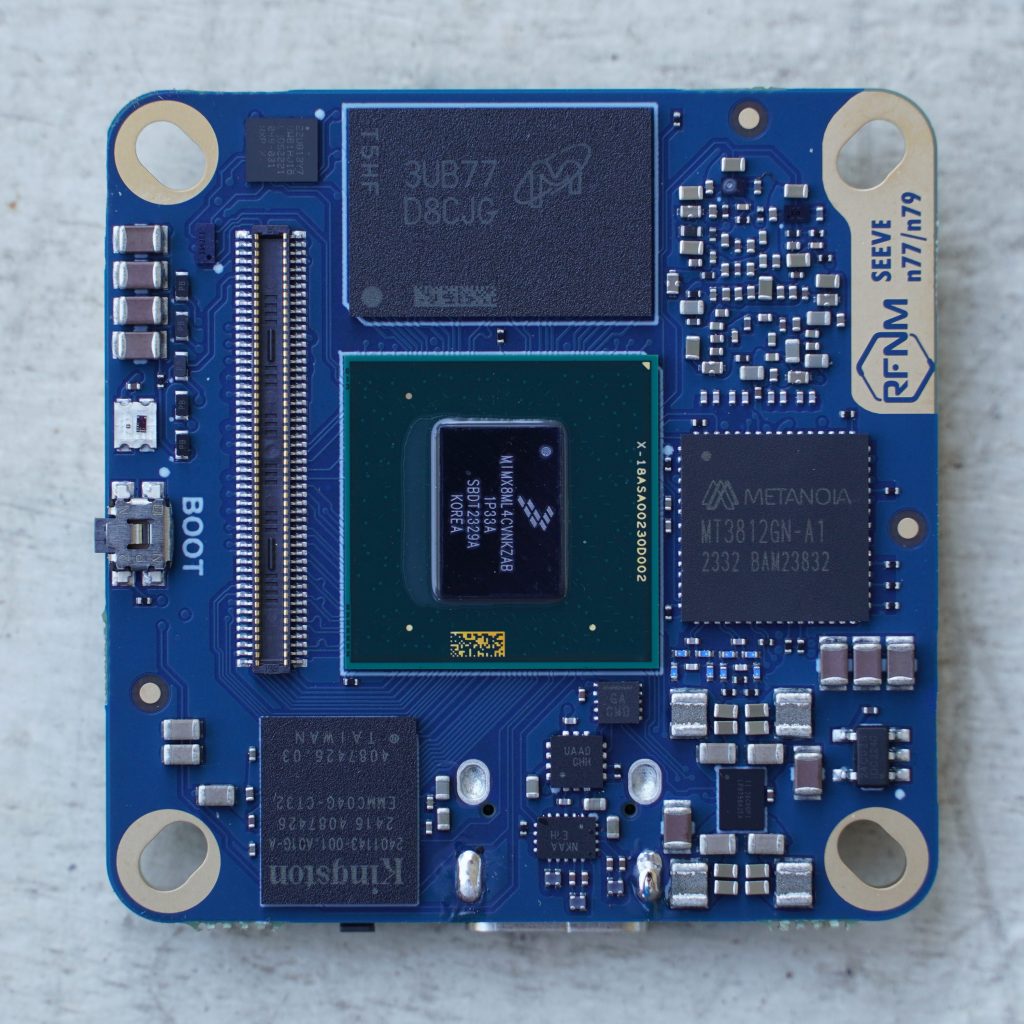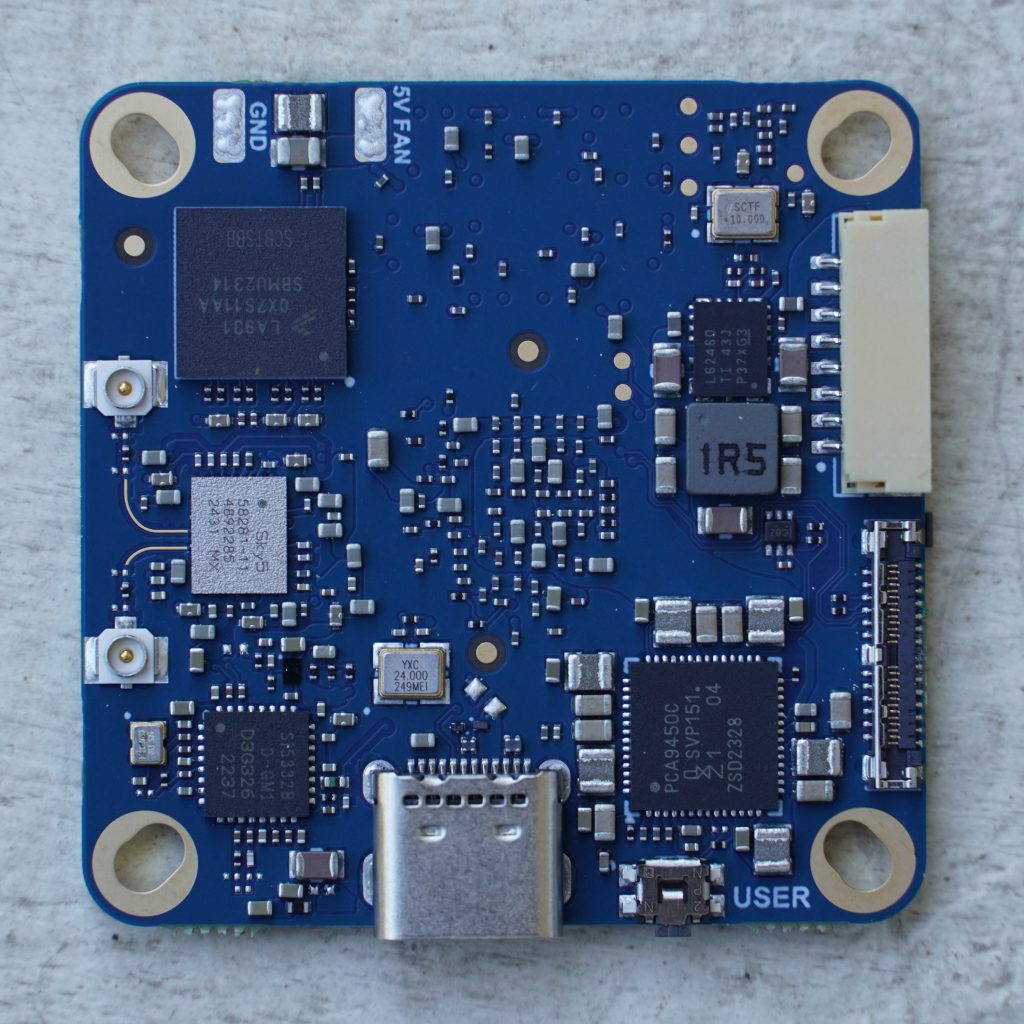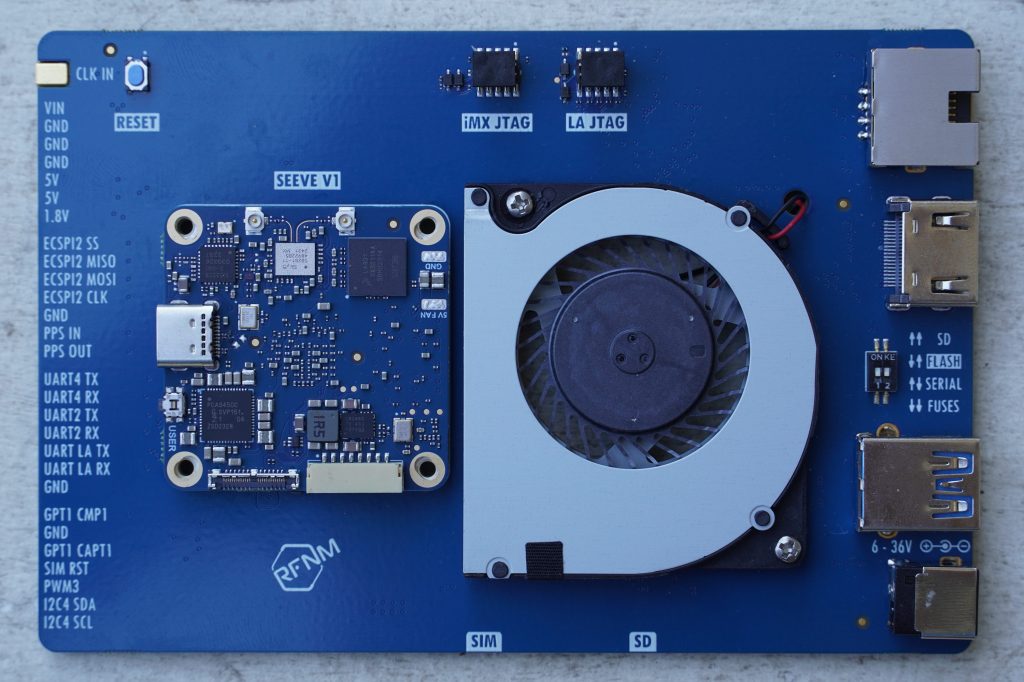We took the RFNM + MT3812 daughterboard and shrunk it down to a 40x40mm form factor (1.6×1.6 inches).
Here is what we have onboard:
- iMX8MP 4x 1.6 GHz A53 CPU, with optional AI accelerator and h265 encoder.
- LA9310 doing lower-phy baseband processing, in a 1x TX, 2x RX configuration.
- MT3812 RFIC, 3.7% EVM, 256 QAM capable.
- 1W PA, 3200-4800 MHz (n77/n79).
- DJI-compatible CSI camera input.
- Direct battery connection up to 36V & 2x 3.3V UART.
- USB-C superspeed supporting host or device mode.
- Optional SN220E secure element and eSIM.


Seeve is both a standalone modem, and an embeddable SDR.
You can design your own carrier board or integrate Seeve into your existing design. HDMI, a second USB superspeed connection, 5V/36V power inputs, ethernet, clock input, I2C/UART/SPI and more are routed to the carrier board interface.
You can also use Seeve completely standalone, for example as a HD FPV transmitter.

Here is what you can build with it:
After a NDA with NXP, you can get access to the NXP-developed lower PHY. This is the building block for a 5G UE, which you can either extend with L1/L2/L3 yourself, or use as a starting point for a custom link (in practice, all you need to do to get symbols to flow in a custom protocol is add a timing sync mechanism outside of the 5G cell sync, so it really shouldn’t be too difficult. If you need inspiration, let’s talk).
The lower PHY takes care of everything from the antenna to symbols, while the iMX processes FEC and upper layers. The NXP PHY supports channels up to 20 MHz wide, 30 kHz SCS.
Pricing and availability:
A limited number of early access devkits are available for purchase for $2k each. The module itself is almost ready for mass manufacturing and can be ordered for $199 each at quantity 1k, with the first customer benefitting from very short lead times. The module is also available for customization and the design itself can be licensed.